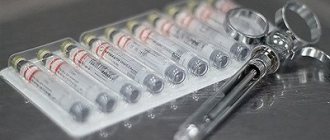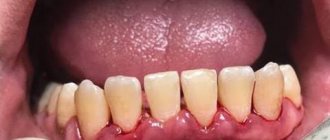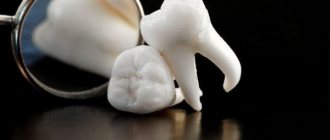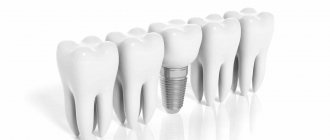Stages of development
The gag reflex is a protective reaction of the body to the action of an irritant. This process is activated by the organs of touch. During the process of sanitation of the oral cavity, a person experiences a burning sensation in the oral cavity. The signal is transmitted to the brain and provokes nausea.
Stages of process development:
- Deterioration in health. Fatigue, irritability, nausea.
- The peak of the condition is vomiting.
- Recovery. The person feels relieved.
- No pathologies between cleanings.
Read also: Baht transfers for gourmets
What can a patient do to reduce the gag reflex?
If you know that you have a pronounced gag reflex, you can prepare for your visit to the dentist in advance. For this you can use medications:
- 4-5 days before visiting the dentist you can take Cerucal and Motilium. In the first days, take half a tablet, and the day before your appointment, take a whole tablet.
- Cerucal can be taken without other medications. In this case, we recommend taking 1 tablet three times a day the day before your appointment, and on the day of visiting the dentist, take one tablet.
- Any medications for motion sickness.
- The night before and on the day of the visit, you can take two Adaptol tablets.
All of these drugs can effectively combat nausea. Usually, if the attacks are caused by fear, it is enough to take medications before 2-3 appointments with the doctor. After this, in most cases, the strong gag reflex that interferes with normal dental treatment goes away.
When nausea is not severe, you can do without pills:
Before dental treatment, it is better not to eat or drink for two hours.
Since nausea is caused by impaired nasal breathing, instill drops that relieve nasal congestion. It is better to do this right before starting treatment.
Rinsing your mouth with soda, salt, mint or eucalyptus-flavored solutions helps to cope with strong salivation.
If you start feeling sick during dental treatment, try to switch your attention. Sometimes shaking your leg is enough to do this. You can block vomiting by breathing. To do this, you need to inhale through your nose and exhale through your mouth.
The dentist must be warned that you have a pronounced gag reflex. This will help the doctor choose the best method to solve the problem. It is often enough to simply reassure the patient or book him in for the second half of the day, since by this time the gag reflex is reduced.
Degrees of gag reflex severity
Sometimes the above methods do not help suppress the increased gag reflex during dental treatment; in total, three degrees of its severity can be distinguished.
Mild degree
A mild degree can be noticed when touching the soft palate, the root of the tongue or its lateral surfaces. Distraction methods, local anesthesia and careful actions of a specialist help.
Average degree
With a moderate degree, a reflex occurs to any touch in the oral cavity; it may have a psychological causative factor and, as a rule, causes significant discomfort to the patient. Anesthesia with accompanying sedation can eliminate the problem. This allows the patient to practically sleep during the appointment and blocks some of the impulses to the brain that trigger the reflex reaction. In addition, medication preparation for visiting a doctor can be used. Tablets for the gag reflex in dentistry: Cerucal or Dramamine help to completely suppress reflex activity. And the drugs Novopassit or Afobazol at night help reduce anxiety during the next day.
What can a doctor do to reduce the gag reflex?
- Lidocaine. The drug is used for local anesthesia. Lidocaine sprays or gels are usually used.
- Local anesthesia of the palate. This method is used on the upper jaw.
- Conduction anesthesia of the lower jaw. After the administration of the anesthetic, the patient’s cheeks, gums, tongue, and lower lip become numb. Their sensitivity decreases, the doctor is able to carry out therapeutic manipulations normally.
During dental treatment, salivation often increases. Saliva gets onto the root of the tongue, and this increases nausea. To ensure patient comfort, the dentist removes saliva using a saliva ejector. If the reflex is pronounced, you can change the patient’s position and treat him while sitting. This way, less saliva reaches the root of the tongue.
Not only therapeutic procedures, but also diagnostic procedures and impressions before prosthetics or restoration can cause nausea. Here, a lot depends on the methods and equipment used in the clinic.
The 32 Dent clinic uses a new intraoral scanner, Medit 500. It allows you to make a 3D model of your teeth. For the patient, this method offers many advantages compared to traditional impressions:
- Scanning comfort. No powder is needed when using the Medit 500 intraoral scanner. The entire scanning procedure takes place quickly and continuously. The device has a small nozzle, which also reduces the risk that the patient will experience nausea during insertion of a foreign object into the oral cavity.
- High accuracy of results. The Medit 500 intraoral scanner allows you to obtain high-resolution images with minimal error. Thanks to this, the doctor is able to accurately assess the condition of the oral cavity and not carry out additional diagnostic procedures.
- High speed. The image obtained during scanning is immediately displayed on the monitor. In order to obtain a 3D model of the oral cavity, approximately 2 minutes are enough - about a minute for one jaw. Even if the patient has a strong gag reflex, in most cases, attacks of nausea do not occur in such a short period.
- Possibility to interrupt scanning and start it from the desired point. The Medit 500 intraoral scanner is turned on and off with a button. If the patient feels nausea or vomiting. The doctor can take a break and continue the scan from where he left off.
The use of modern intraoral scanners helps our doctors make not only treatment, but also diagnostic procedures comfortable.
Tags
teeth restoration teeth straightening dental treatment and tooth extraction tooth restoration tooth restoration tooth alignment dental treatment and tooth restoration tooth extraction dental prosthetics without prosthetics and dental treatment dental treatment during dental treatment even conventional treatment during dental treatment. will make the treatment effective dental treatment and nausea treatment required during dental treatment the treatment process is necessary
consultationinformationocclusionimplantationcasesstatistomatologicalprosthesesrowofcariesservicebracesmorefeardetailedfillingrestorationcontactssign upreceptorscrownmucosalmedicaltheseworksmanifestationsremovalpromotionsclinicshelpchildrenwillourconductstresswhiteningisapplicationyoursituationodorsconnectionto cope with the general goalproblemneededtoolsremoval new methods of data site implant which correction practice prevention character system doctor dental children name often personal veneers better features presence background implants mouth guards
How to avoid the gag reflex3
One common technique for controlling the gag reflex is to apply pressure to the muscle between your thumb and index finger. As the pressure in this area increases, you will feel your gag reflex subside.
If this doesn't work, use the dentist's secret - clench your left hand into a fist, squeezing your thumb intensely. This will distract you from the unpleasant feeling in your mouth. This trick is actually backed up by several studies because it is a form of acupressure.
You can also train your gag reflex with a toothbrush. After brushing your teeth, start brushing your tongue and try to get to the end where it meets your throat.
You can try cleaning the middle of your tongue and start moving back a little. If you feel the urge to gag, go back and then move up again until you reach the farthest point of your tongue. Repeat the process until you no longer feel nauseous.
Just try to practice 2-3 times a week, and soon you will notice that your gag reflex is dulled or completely disappeared.
Why does this unpleasant reflex occur?
Normally, the gag reflex occurs when there is a potential toxic threat in the body.
It is a natural physiological process designed to protect our organs and blood from various intoxications. It is also designed to eliminate foreign objects from the throat, which is very important for maintaining vitality in certain situations.
An increase in the gag reflex is very often associated with hypersensitivity of the soft palate. When an object touches the inside of the mouth, located under the upper jaw, an involuntary attack occurs.
Any adequate person is embarrassed by this factor. After all, just imagine: you pay a visit to a therapist or ENT specialist about a sore throat, and during a standard examination, your breakfast ends up on the floor of the office, if not on the doctor’s clothes.
How can such an incident bring joy and pleasure to its culprit? Of course not. Therefore, people with these problems often use local anesthetics to provide local desensitization to the soft tissues in the mouth.
It happens that the gag reflex provokes a protracted and intense cough. This case is a good reason to contact a specialized specialist in the field of pulmonology. But first things first. So, where does the gag reflex come from in a healthy person, and how can you fight it?
If the gag reflex occurs when brushing your teeth
Typically, a gag reflex occurs when cleaning the tongue with a toothbrush if a person pushes it deep into the tonsils. The attack does not occur as rarely as we would like, and it is caused by a mechanical effect on the reflexogenic zone, which in this case is the root of the tongue. The back wall of the pharynx can react in the same way.
It is noteworthy that urges can occur not only against the background of mechanical pressure on “sensitive” areas. You may experience attacks due to your body's rejection of toothpaste, powder, or other aggressive dental cleansers.
How can you get rid of the gag reflex while brushing your teeth? To effectively suppress it, you should engage in active “taming” of attacks.
To do this, you will need to study your own “vomit zones” in detail. Take a toothbrush and press it on the back of your tongue, as well as the back or front wall of your throat. Observe how your body reacts to such stimuli.
If you regularly influence sensitive areas, over time you will develop an addiction and the gag reflex will no longer bother you constantly. It is noteworthy that professional sword swallowers train in this way.
How to properly suppress the gag reflex:
- You have already figured out where your personal “vomit zone” is. Now take your toothbrush again and start the actual “training”. It is optimal to do this before bed, in the late evening;
- Start performing the exercises from the tip of the tongue, gradually moving the oblong object to the most sensitive area;
- At first, this may provoke a gag reflex, but try to control yourself and wait until the attack passes;
- Start making massage movements with the brush at the “peak point”;
- Continue rubbing your tongue for 10 seconds and then go to sleep;
- The procedure must be repeated every evening. When you notice a decrease in sensitivity and suppression of the gag reflex, proceed to the next stage of training;
- When you are ready to move the brush further, push it 6-12mm from the starting point and begin massaging. Once you get used to it, take it even further;
- Gradually you will work through all areas and get to the most sensitive point on the back of the tongue. In this case, the outer surface of the brush will have to come into contact with the soft palate. Work on it until you achieve a fixed result.
Be persistent and persistent: such training may take you about a month. After this, you can safely go to an appointment with an ENT specialist.
But keep in mind that the exercises will have to be repeated from time to time, otherwise the sensitivity will return and all your efforts will come to nothing.
You can get rid of the gag reflex with standard physical activity.
In order to quickly stop an attack, you should sharply raise your outstretched straight legs while sitting or lying on your back. In this case, it is important to tense the abdominal muscles with force and stay in this position for several minutes. This simple action will help you get rid of an unpleasant symptom in an “emergency” manner.
Try to constantly breathe through your nose if your urge is not associated with irritants in the form of strong or unpleasant odors.
A child vomits after eating: what to do?
It happens that the gag reflex appears in babies while eating. We are not talking about the physiological regurgitation of a baby in the first weeks and months of his life. If a gag reflex occurs in a child while eating, it can even lead to vomiting, and it will be quite intense. Typically, neurotic vomiting, as it is called in clinical practice, occurs in babies during the period of introducing complementary foods.
If a child stubbornly refuses to eat solid, “adult” foods, and parents try to force him to do this, he develops similar attacks. Moreover, if you do not pay attention to this and continue to act at your own discretion, the baby may develop a persistent aversion to food and one type of food.
However, if you are obsessed with the idea of weaning your baby as quickly as possible, or you think the time has come for this, try to act gently and carefully.
- Under no circumstances should you force food into your child, especially if he or she has no appetite at the moment;
- Adhere to the principle of fractional feeding - do not overfeed the baby and give him food in small portions;
- If your child suffers from decreased appetite, try taking long walks and active games in the fresh air;
- Respect your baby's taste preferences. Would you like it if you were persistently fed food that makes you feel disgusted? Your child doesn't like it either. In addition, with constant violent actions on your part, he may lose all trust in you. Don't be upset if your child refuses food that is healthy from your point of view. What was unloved yesterday may be liked tomorrow - children very often change their “gastronomic preferences”;
- Do not distract your baby while eating with conversations and games. Concentrate his attention on the meal;
- Don't use sweeteners or flavorings to achieve "success." So your baby may develop an unhealthy addiction to sweet, salty, spicy, etc.;
- If your child behaves “badly” during feeding (i.e., reaches into the plate with his hands, throws food around), do not scold him. He is learning about the world, and your aggression may instill in him a fear of feeding.
If you are seriously concerned about neurological vomiting, you should visit your doctor immediately.
Vomiting when coughing in an adult
Cases of coughing with a gag reflex in adults are less common than similar phenomena in children. However, they do occur and are associated with the same irritation of the sensitive areas of the throat.
This usually occurs with chronic bronchitis or pneumonia. Both diseases require adequate medical treatment, and therefore you should urgently consult a doctor if you experience such symptoms.
If your condition, or the condition of your child, seriously worries you, do not put off visiting the doctor.
Remember that only a qualified specialist in the vast majority of cases can determine the nature of the problem and effectively eliminate it. Be healthy!
Injuries
In the first days after installation, injured areas may appear on the surface of the gums: small wounds, abrasions, etc. They may appear due to improper chewing technique or sensitivity of the mucous membrane. Normally, the denture stops rubbing the gums within a few days. You can speed up this process by rinsing with antiseptic solutions and chamomile decoction.
If injuries do not go away over time, become more pronounced, or cause increasing discomfort, you should consult a doctor. The problem may lie in the design itself. The doctor will conduct an examination and correct the prosthesis. Usually one correction is enough for the discomfort to go away.
Problems with diction
After prosthetics, there is less space in the mouth, which is why the patient may have problems with diction at first: the tongue does not have enough free space, sounds are distorted. To cope with this faster, you will need training. To do this, you can read aloud, pronounce individual complex sounds, and do tongue exercises. The more actively the tongue “works” immediately after prosthetics, the faster the adaptation will take place and normal diction will be restored. When getting used to speaking correctly, you need to make sure that when pronouncing sounds, saliva does not fly from your mouth. A good workout would be tongue twisters that are spoken slowly, making sure that the pronunciation and articulation are correct.










